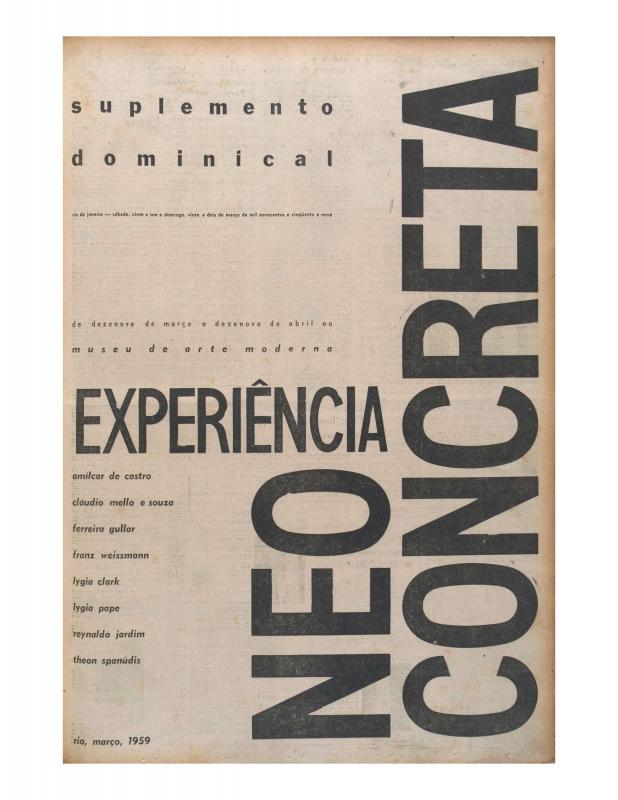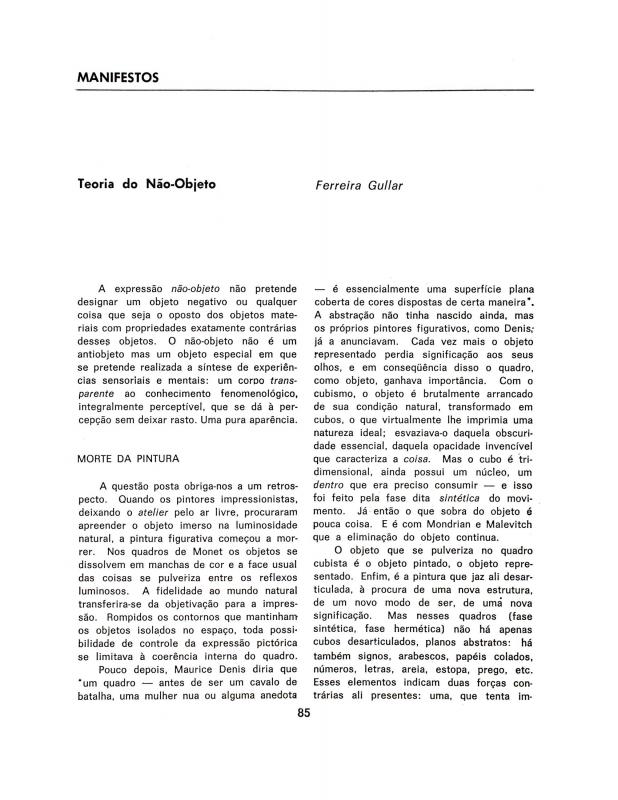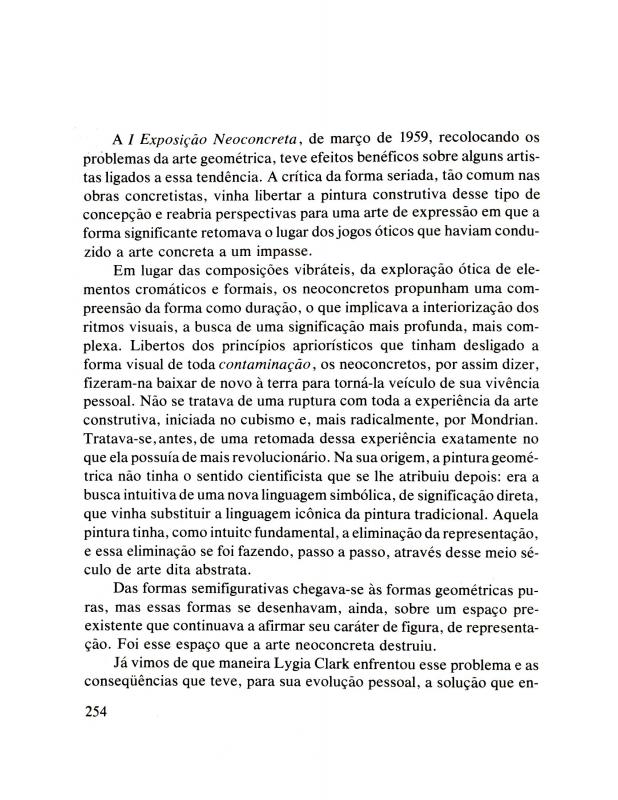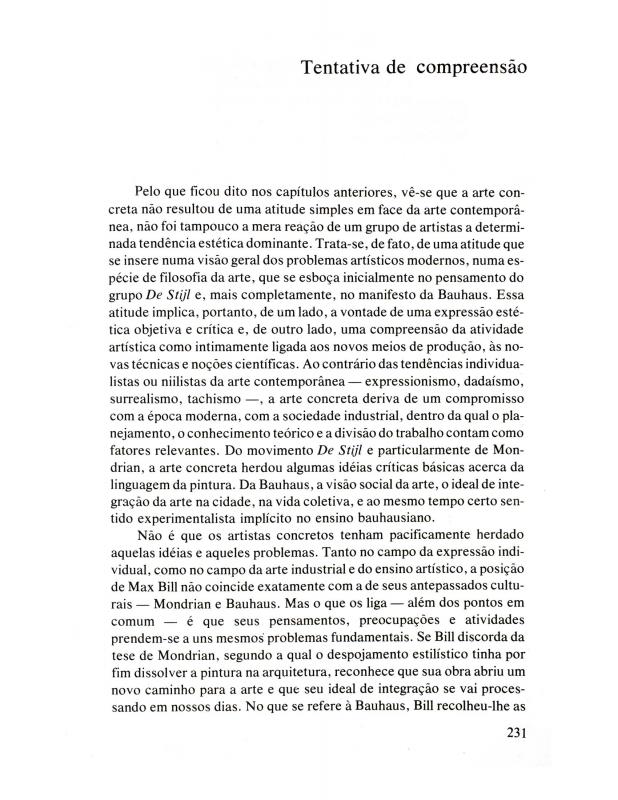This article is one of a series entitled "Etapas da Pintura Contemporánea" that was published between March 1959 and October 1960 in the Suplemento Dominical do Jornal do Brasil. In this collection of articles, the critic and poet [José Ribamar] Ferreira Gullar (b. 1930) discusses non-figurative geometric art from Cubism to Neo-Concrete art, in order to determine the latter’s historical roots. He then takes the essential step of reevaluating the international constructive movements he had previously written about in March 1959 in his “Manifesto Neoconcreto” [see the ICAA digital archive, doc. no. 1110328].
”Do quadro a não-objeto” is an example of Gullar’s critical work, showing how he presented his thoughts on Concrete art based in this case, on the work of Lygia Clark (1920–1988). He reviews her Bichos series and discusses the idea that Clark’s work reaffirms the possibility of individual expression. Gullar also repeats his argument—outlined in other essays and articles that are mentioned below—concerning the symbolic aspect of geometric art. In this article, Gullar is already developing the ideas that became the basis for his “Teoria do não-objeto,” that was published a few months later; see doc. no. 1091374.
The author subsequently published his weekly essays in a later collection with a different title: Etapas da arte contemporánea (Do cubismo à arte neoconcreta) (Rio de Janeiro: Editora Nobel, 1985). Among the essays that are relevant to this one, see “Cor e estrutura-cor” in which Gullar compares the chromatic experiments conducted by Hélio Oiticica and Aluísio Carvão with Lygia Clark’s work(see doc. no. 1091219); see also another relevant essay by this same author, “Tentativa de comprensão,” in which he provides a historical backdrop to Concrete art ( doc. no. 1091341).




